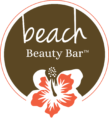Are you reading food labels? It might seem like an unnecessary step in the shopping process but trust me when I tell you, it’s a crucial step if you’re acne-prone.
I’m an advocate for clean, natural eating: anything that is modified or manufactured isn’t going to do your skin any favors. And when it comes to acne-prone skin, it’s important to be even more prudent about what you put in your body.
While it’s impossible to list every food that’s bad for acne (and why) in one blog post, you can access more information about what to avoid in OUR BLOG POST HERE.
Beware of Dairy Additives
Many makers of non-dairy milks are now fortifying them with B12.
B12 triggers acne. This is why it’s crucial to become a label reader. The reason they do this is because someone who is on a vegan diet needs more b12 in their diet.
So, before you pick out just any old oat milk, almond milk, or coconut milk from the dairy case… Be sure to read the label first.
Do Your Cheese Label Research
Same goes for feta cheese.
Sheep milk and goat milk are completely safe for someone who suffers from acne, however not all cheese is made the same.
Feta is known to be goat milk cheese. However, in reading labels we find American dairy companies are making it combined with bovine or cow milk. So don’t assume because the label says it’s feta that it will be safe.
Read the label. You’ll be surprised to see how many products sneak ingredients into well known foods that you eat.
Look for Soy on Labels
Soy hides in everything…
Read the label of most processed foods and you will find soy hidden somewhere.
Hidden Soy Products – What Else Should I Avoid?
Other foods to watch out for when it comes to secret soy include the following:
- Bread
- Gravies and sauces
- Seasonings and spices
- Frozen ice cream and desserts
- Crackers and salty snacks
- Cooking sprays
You must read the ingredient label every time you buy or eat a product if you want to avoid consuming soy. When reading the ingredient list in products keep in mind that soy goes by other names including:
- Vegetable protein. Hydrolyzed plant protein (HPP), hydrolyzed soy protein (HSP), hydrolyzed vegetable protein (HVP)
- Bean curd (dofu, kori-dofu, soybean curds, tofu)
- Edamame
- Miso
- Nimame
- Okara
- Tempeh
- Yuba
Read Hair, Makeup, and Skincare Labels
Same for makeup and haircare. Do you have haircare or skincare products that say “Non-Comedogenic” or “Won’t Clog Pores” on the bottle?
You’ll be surprised to know that many of your favorite cleansers, foundations, moisturizers and more may contain pesky pore clogging ingredients – even if they say they don’t!
“Oil-Free” products can be comedogenic.
“Sodium Laureth Sulfate (SLS) Free” doesn’t mean it’s acne safe. SLS is not only a pore-clogging ingredient, but also an irritant.
Keep our pore clogging list on your phone so when you’re out shopping, you can quickly review products.
Choosing something off the shelf without checking the ingredients is a sure-fire way to end up with some inflamed enemies.
The Bottom Line
In addition to a healthy diet, sticking to a consistent routine of cleansing, treating and moisturizing with noncomedogenic skin care products specifically formulated for acne will help you beat breakouts and balance your skin.
Read The Label!
It’s hard to not overstate this point repeatedly. When grocery shopping, always, always, always read the label! Ideally, your diet should be as natural as possible to the point where you don’t need to read endless labels. However, for the products that do contain an ingredient label, always read it and look out for hidden dairy, sugars and artificial sweeteners and soy.
Are you breaking out but not sure why?
Schedule your consultation today. We can help you find a solution to your acne breakouts. We will get you started on your clear skin journey!
Cheers to clear!
Rene

